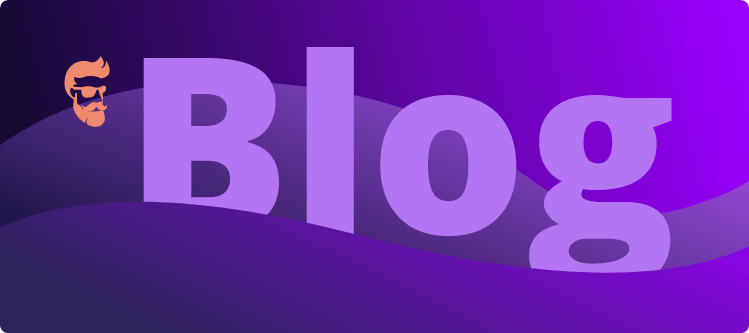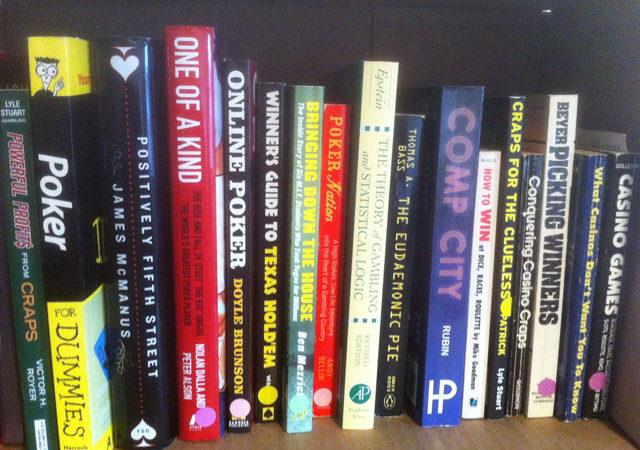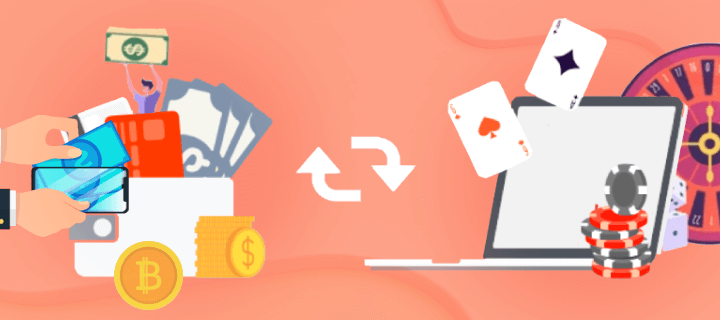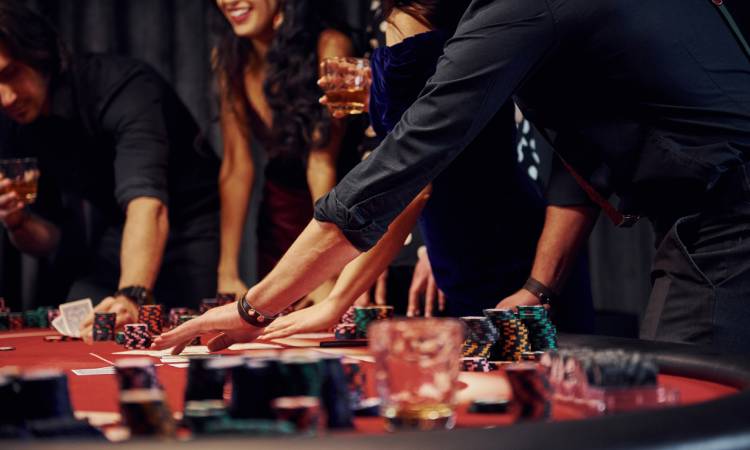5 Books to Help You Learn Poker Quickly

Many people nowadays acquire all of their knowledge from the Internet, either through articles or videos. Even so, I’m sure many of you, like myself, still like curling up with a good book. Finding the greatest poker books for beginners and intermediate players, on the other hand, might be tough.

Even Internet searches aren’t always helpful. Many of the lists I’ve seen seem to be based on reading the most recent Amazon reviews rather than actually reading the book! Since I’ve read dozens of poker books, including all of the ones on my list, I’m here to assist you.
Buying the most recent “hot” book may not be the greatest option, as poker books have gotten much more sophisticated over time and customized to certain tactics that may or may not be applicable next year, or even next month. What’s actually needed is clarification on which books are the best long-term investments for both cash games and MTTs.
Must Read: Understanding Poker Game
To that end, I’ve compiled a list of my favorite Texas Hold’em poker books that offer the most bang for your buck when it comes to learning the game. Just keep in mind that my recommendations are geared toward advanced players rather than absolute novices. When it comes to rules and tactics, you’ll need some fundamental poker expertise. Please notice that for your convenience, I have included links to all of the books on Amazon.
First, because I understand that some people are extremely busy, I’ll give you the short version. I would start with Professional NL-Hold’em and digest it entirely before reading anything else, assuming you have read many of the basic books out there, such as Harrington On Hold’em (Click for Amazon Listing). It should become your handbook in the future, particularly for cash games. PNLH is a must-read no matter what game you’re playing. Cash games, tournaments, and sit and go’s become child’s play if you can beat cash games, as I often say.
Furthermore, because most players will also participate in tournaments, I would recommend reading both Poker Tournament Formula, Volume 1 and Poker Tournament Formula, Volume 2 first, followed by Kill Phil and Kill Everyone. By having a similar rational and formulaic approach to poker, the concepts in these books nicely complement Professional No’Limit Hold’em, while still allowing for creativity within the confines of profitable theory. Overall, both two-book series will provide you a crash lesson in the types of strategies you’ll need to succeed in modern poker tournaments.
Now, for those of you who aren’t in a rush, let’s go over each book or series one by one:
The Best Cash Game Book
Professional No-Limit Hold’em was revolutionary when it was first published. At the time, there was relatively little good literature on the subject of cash games. You had two options if you wanted to play cash games well: Super System or The Theory Of Poker. While they were both quite important poker books at the time, they have grown a little out of date by 2007.
Professional No-Limit Hold’em is the game for you. What I enjoy best about this book is how it takes a complicated subject, no-limit hold ’em cash games, and turns it into a step-by-step guide to navigating the games using the REM process (Range Equity Maximize). The authors, Matt Flynn, Sunny Mehta, and Ed Miller, use a concept known as the “commitment threshold,” which may be used to build an entire poker strategy. You may more easily traverse post-flop planning and have confidence that you are committing your stack correctly if you plan your hand and create profitable stack-to-pot ratios. Are you perplexed by what I’m saying right now? If that’s the case, this is a must-read for you. Do not play another poker hand until you have thoroughly read this book! Many of the concepts in PNLH will appeal to automatic poker players, as many of them work well for players who routinely play stacks of 50 large blinds or less. Even tournament players can reap significant benefits, as the bulk of tournaments will place you in low-SPR conditions. Isn’t everyone short-stacked at some point in every tournament? In conclusion: If you’ve never looked into how people think, now is the time.
Prepare to have your mind blown away by the skills of a professional poker player.
The Best Tournament Books
Arnold Snyder, a renowned blackjack player, wrote the Poker Tournament Formula books from his perspective. His goal in writing the books was to discover the true technique for winning poker tournaments. His primary concept was that the “tight is right” approach did not work in the tournament format if you wanted to maximize your earnings because the majority of the prize pool is usually up at the top. In other words, min-cashing is rarely as nice as busting most of the time but occasionally winning one of the top rewards.
The most significant contribution of these publications is to emphasize the need of not simply sitting about waiting for “good” hands to play, as there are very few opportunities to acquire chips in a multi-table game. To build chip utility, the fundamental concept is to get involved early and regularly. Snyder makes the contentious claim that the more chips you have, the more valuable each chip becomes. This contradicts most players’ perceptions of chip value, which is based on the mathematical notion of ICM, which states that the fewer chips you have, the more valuable each chip becomes. On this issue, I tend to agree with Snyder.
Consider that for a moment. Have you ever been in a tournament with a mound of chips in front of you? I’m referring to a monster stack, where you have at least twice as much as the table’s second-place stack. With this many chips, you have a lot of flexibility in terms of when you play a pot. Everyone at the table must fear you since you can put everyone else’s tournament on the line! While each chip may be worth less than the prize pool, the fear factor is a significantly more important component to consider in the early to middle rounds of a tournament.
Both the ICM and the Poker Tournament Formula variants, in my opinion, must be understood equally. The latter to get through the early to middle phases, and the former to get through the late stages when everyone is running out of time. These books are well worth your money, even if you aren’t primarily a tournament player. The first book covers tournaments with a faster pace, while the second book adapts the tactics to compete in tournaments with a deeper stacked field.
The Kill Phil series is the final two novels I suggest for intermediate players. Both works, in my opinion, are excellent companions to the Snyder novels. At the end of the day, both book series essentially support an aggressive tournament style of play. Kill Phil and Kill Everyone, on the other hand, take a slightly different approach to the “issue” of poker tournaments.
Must Read: Poker Table Material
The first book, Kill Phil, lays out a very basic technique for real beginners who are having trouble playing post-flop. The entire concept is built on making the game easier to understand and offering a newbie the “best opportunity conceivable” to win an event, even if they have low competence. “If you can’t be good, at least be dangerous,” the book basically advises, hence the title.
This is a book I would recommend to anyone who is new to poker. For those with a little more experience, skip book 1 and go to book 2, Kill Everyone. This book, in my opinion, is an excellent supplement to Poker Tournament Formula. Both emphasize on aggressive strategies, but from different perspectives, with different approaches to different tournament stages. My recommendation is to read both series and combine concepts from each to create a hybrid that complements your existing playing style. I won’t say much more about the books because I don’t want to give anything away about them!
What is the best order for me to read these books?
I wish I had someone like me to advise me exactly how to continue if I were starting over and wanted to progress from the novice stage. If I could talk to myself, I would tell myself to read the following poker books after Harrington On Hold’em:
- Professional No’Limit Hold’em
- Poker Tournament Formula 1
- Kill Phil
- Poker Tournament Formula 2
- Kill Everyone
As a bonus, if you want to drastically improve your 50bb and below skills, have read my book, and want to take your game to the next level, you’ll find that my recommended poker books provide the least amount of resistance to crushing both short stack cash games and the mid-to-late stages of tournaments. I chose titles that I believe are more evergreen and have withstood the test of time. Each book’s themes are applicable now and in the future.
I can confidently state that if you read and apply all five of these poker books, your knowledge and understanding of how to make money at poker will skyrocket. Even experienced gamers could benefit from a refresher now and then, and these classics are ideal books to have in your library for that purpose. In fact, some of the books on my bookcase have fallen loose from their spines and are breaking apart as a result of my frequent reading!
Additional Resources
If you’ve made it this far, here are a few books I’d suggest if you want to learn more about advanced poker themes. These books are also timeless and would be a welcome addition to any poker collection.
Tommy Angelo’s Elements of Poker
If you’ve ever watched one of my videos or read one of my writings, you’ll notice that I frequently emphasize reciprocity. Tommy Angelo is the one who invented the phrase! Elements of Poker is a great read that is both entertaining and educational. When it comes to poker, Mr. Angelo has a unique perspective, and his views are as profound as they are practical. Enjoy!
David Sklansky’s The Theory Of Poker
While lacking in pure entertainment appeal, this book goes right to the point of what kind of mentality is required to be a good poker player. Many good poker books build on the framework provided down in Theory Of Poker. This is a book I strongly recommend, but only if you are a really advanced player.
Exceptional, Nolan Dalla contributed to this article.
So, this isn’t a strategy guide. Nonetheless, I believe it is essential reading for poker players. As a look into the most brilliant poker mind to ever live, rather than as a cautionary story. Discover more about Stu Ungar’s life and how he approached poker. Even if it’s merely via “osmosis,” I’m confident it will make you a lot better player. Apart from that, it’s a thoroughly enjoyable read. Are you unfamiliar with Stu Ungar? What is a good tournament record in your opinion? Is that a 20% cash rate? Stu finished in the top three in 21 of the 34 tournaments he entered during his career, and he won 10 of the 30 big tournaments. Allow that to sink in.
I hope you enjoyed reading this essay. If you’re interested in learning more about me, go to my site. I have published a book on how to play poker with a little stack under 50 large blinds, which is great for beginners! My book will be compatible with the content in the books I recommend. Thank you for reading, and please tell me about your favorite novels and why you like them in the comments section below!




